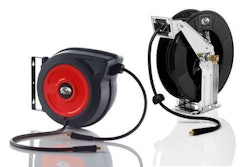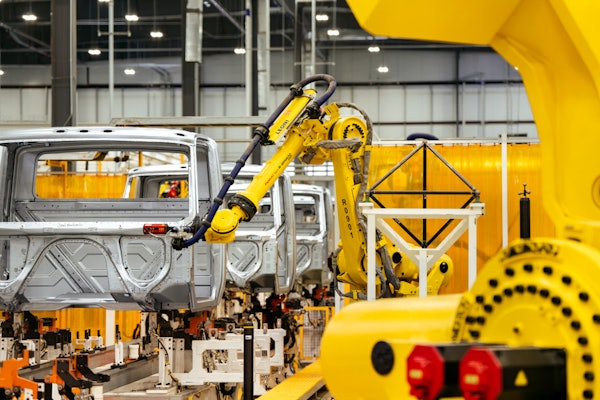As May, 2017 reaches its halfway point, CNBC this week noted the 20th anniversary of Amazon (AMZN) going public. Had we invested $10,000 in their IPO, we would enjoy a holding worth well over $5 million today.
On this anniversary, AMZN has twice the market cap of Walmart and represents 1+ percent of retail sales in the United States. It is just finding its footing worldwide, and is ominously eyeballing ‘specialty’ distribution (read vehicle aftermarket distribution).
They must have loved recently announcing the major traditional aftermarket suppliers that have agreed to support their new push. Manufactures and distributors-to- retailers/jobber/service shops resisted selling AMZN direct for fear of channel retaliation.
Now that all items are available through AMZ Marketplace, direct selling of most popular SKUs to AMZN is snowballing.
Amazon, eBay or Alibaba have not missed noticing the multi-billion parts opportunities. With vehicle parts sales through ‘e ’channels reaching $7.5 billion last year, why have legacy channel players (fancy description of ‘traditional’ distributors) continuously under-rated the AMZN Effect … for 20 years?
Why didn’t we as an industry better assess AMZN future threats?
Some thoughts:
1. Consistent under-estimation by channel ‘experts’? Favorite example: Barnes and Noble unveiled a website in 1999 that was going to crush “Amazon Bomb.” Fast forward to this April, B&N announced its fourth CEO in four years. With 645 stores down 9 percent for 2016, wish him well. Barron’s (5/8/17) is targeting AMZN shares to hit $1100 (+20 percent) in a year.
2. Narrow-frame expert forecasting. Aftermarket experts (immersed in their studious, unchallenged but comfortable past) extrapolate forward in linear, incremental fashion. They have consistently celebrated, for example, the details of Grainger’s 90-year, highly-evolved “moats” that AMZ can’t imitate, yet. Yesterday is rarely tomorrow.
3. AMZN isn’t imitating any factory-out, push-product-to-market channel. They are inventing an entirely new, customer-centric channel that starts with ordering online. Then, they invent whatever is needed backwards to factory sources in China. AMZN bought cargo jets and dry van trailers, for example, to have better, cheaper delivery at peak times. Not to compete with FedEx and UPS.
4. AMZN’s 500 customer-centric metrics guide their non-stop innovation to create value for digital buyers. In two years, imagine your 5G bandwidth phone will have merged with the evolving Alexa/Echo-Biz App to instantly retrieve all product information needs, including price and delivery-speed shopping comparisons, while AMZN achieves breakthroughs for 30 minute delivery and cost. A Super-Future dream: driverless vehicles to ZIP + 6 zones to release drones for last block delivery?
What’s in your customer-centric, value-innovation pipeline? In 2019, over 50 percent (and climbing) of all purchasing will be by millennials who see traditional reps in their traditional roles as a time waster. Are you reinventing sales force cost/benefit per call proposition?
Good news. Kind of. AMZN just wants your zero-attention-needing, digital customers/orders. You can keep the unprofitable, high-service-cost, small-order customers.
Your best, most profitable customers want you to match AMZN’s web shopping/ordering experience, range of delivery options and prices. How will you keep the 5 percent of your most net-profitable customers and get even more of their total spend?
WW Grainger May Be the Best, But…
In April, WW Grainger, one of our heroes in industrial distribution, reported that earnings were down year-over-year by 22 percent along with an acceleration in branch closings. Grainger stock peaked at $258 around March 1 and closed on May 5 at $189.
WWG is a very well-run company. Steady innovations have powered great numbers and increased dividends for 45 straight years. However, stock-price damage control requires executives to downplay the stock-scare of being Amazoned (mostly by omission) while cheering plans to build on their unique strengths.
WWG will survive, and probably thrive. It covers niches of customers/SKUs needs that AMZN-BIZ can’t currently dent. Questions yet to be answered include those critical to the ‘traditional’ vehicle parts distributors:
1. Which niches of customers/items has AMZN already been stealing?
2. How net-profitable where these defectors for you or WWG?
3. Who will innovate more customer value by 2019? You or AMZN?
It Is All About Prime Time.
AMZN Prime Customers are typically richer, bigger-buyers, younger, busier, more ambitious and digitally-savvy. Sound familiar? They know what they want to buy.
Primes are zero-service-cost types. As 24/7 buyers, they see outside and inside reps as a Monday-to-Friday, 9-5 inconvenience who slow down ordering. For them, traditional distributors’ ‘service edge’ is an un-needed overhead cost. AMZN gives them what they want and the overhead savings in lower prices on commodity staples. Unfortunately, 50 percent of any distributors’ smallest, neediest customers stay loyal as net-profit losers.
Note: We have covered ad nauseam how aftermarket distributor can lose 5 percent of its sales from lowest-cost customers on most profitable SKUs and see profits drop by 50 percent. We need honest, new lenses to assess AMZN-BIZ’s forward innovation effects.
Are Parts Distributors Somehow Insulated?
In January 2017, AMZN signed more, direct-buy agreements with aftermarket, auto-parts makers. Big 4 auto-parts retailers’ stock prices took a hit (Genuine Parts, O’Reilly’s, AutoZone, Advance Auto). But, April stock analyst reports claimed: “Fears Overblown … AMZ can’t Dent the Big 4s’ Moats, Stocks a Bargain.”
Analysts detailed the powerful, supply-chain barriers the Big Four have created: Professional mechanics need local, technical advice; high fill-rates; quick deliveries and pick-ups; and easy returns of wrong orders and rebuildable cores. AMZN’s better prices aren’t enough to win.
Why We Are Calling B.S. on These Analysist Reports
1. AMZN’s parts sales for 2016? We found estimates of $3 to 4 billion in sales going to $5 to 6 in 2017 due to January’s expansion moves.
2. The trend for factories selling AMZN direct is increasingly up (but not well publicized).
3. Comparable delivery response time and prices. AMZN has same-day delivery in 40 cities at an average price below the Big 4 of 23 percent. There was no mention of AMZN’s 30-minute delivery experiments.
Additionally, customer segment sizes were expressed only in terms of sales. What about the net profitability of the customers who self-select to buy from AMZN who don’t need services? The top unmentioned assumption was that AMZN is currently doing what they will still be doing in 2019. NOT!
Some Ideas on Making Your Plan
1. Be true to your infrastructure and most (historically) profitable customers. Don’t try to sell stuff online to the world. AMZN’s infrastructure wins. Ask your most profitable customers in your most profitable niches how you can digitally enhance their total buying needs. Then, do it.
2. Measure and fix the profit cross-subsidies among your customers and SKUs before AMZN steals your cream customers’ purchases on cream SKUs.
3. Get line-item, profitability analytics to know and stop the cross-subsidies among customers and SKUs.
4. Innovate value for your winners. And, stop offering free services to the excessively, unprofitable customers. Think minimum orders; unbundled delivery; and restocking fees.
Finally, don’t try to imitate AMZ (like Walmart has so pathetically done). Innovate value for your profit-core customers utilizing specific, localized insights. This is still a relationship business… but not for the old ‘donut patrol’. Don’t make one more sales call where you don’t bring new supply-chain compression, customer centric ideas.
If you think “my suppliers (or sales people) won’t enthusiastically support a customer-centric innovation idea,” then you cannot possibly be customer-centric. Customer-centricity will reward both suppliers and best reps who can and are thinking value reinvention.
To get and master cloud service Line-Item, Profit Analytics from industry leader WayPoint Analytics, contact us for a tutorial at [email protected] , [email protected] or Randy MacLean, [email protected] .











